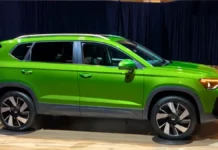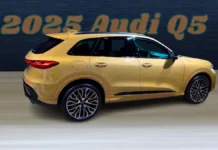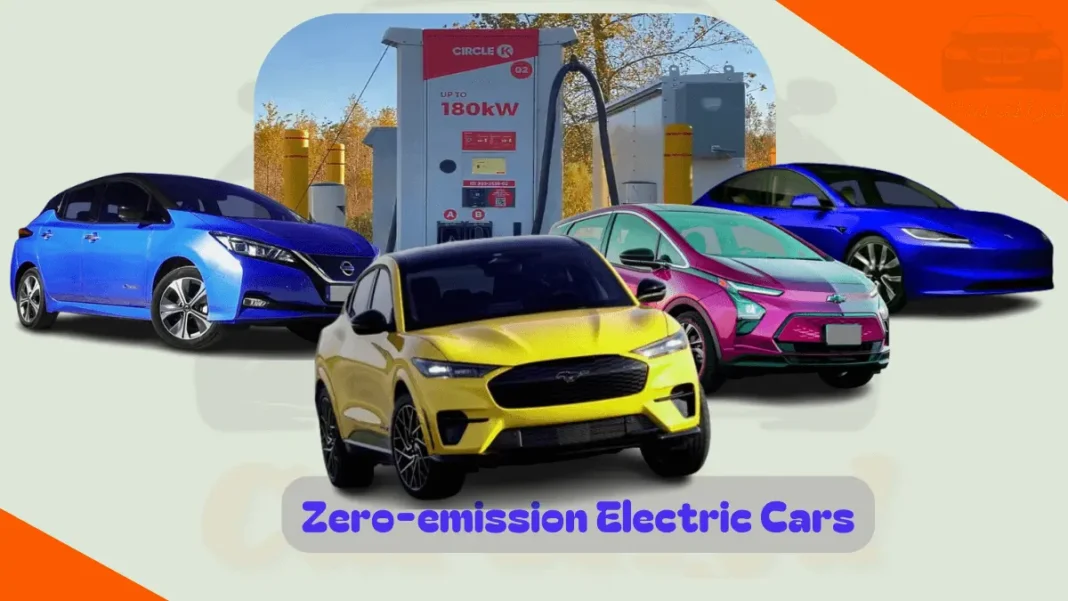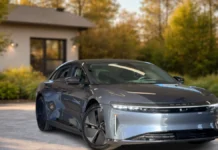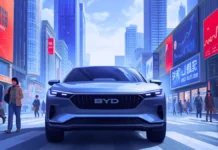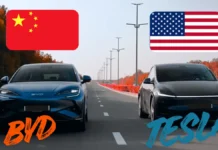Electric vehicles (EVs) have evolved from a niche market to a central element in the future of sustainable transportation. If you’re looking to make a significant change that benefits both the environment and your wallet, switching to a zero-emission electric car might just be the best decision you can make. In this article, we’ll explore everything you need to know about zero-emission electric cars—from how they work to their benefits, popular models, and the future of electric mobility.
Table of contents
- Why You Should Consider Zero Emission Electric Cars Today
- What Are Zero Emission Electric Cars?
- Key Benefits of Driving Zero Emission Electric Cars
- Popular Models of Zero Emission Electric Cars
- How Zero Emission Electric Cars Help the Environment
- The Future of Zero Emission Electric Cars
- Overcoming the Challenges of Zero Emission Electric Cars
- Is It Time to Drive an Electric Car?
- FAQs
Why You Should Consider Zero Emission Electric Cars Today
We all want to make a positive impact on the world, especially when it comes to reducing our carbon footprints and fighting climate change. For many people, driving an electric car has become one of the easiest ways to take action. The zero-emission electric car is at the forefront of this environmental revolution.
Imagine this: You’re driving down the road, knowing that you’re no longer contributing to harmful air pollution or greenhouse gas emissions. Your car is powered by electricity, not fossil fuels, making it a crucial part of the solution to reducing urban pollution. Not only do you get to enjoy a cleaner, quieter driving experience, but you also save money on gas and maintenance. The best part? You’re doing your part to create a more sustainable future for generations to come.
What Are Zero Emission Electric Cars?
Understanding the Basics of Zero Emission Technology
A zero-emission electric car is powered entirely by electricity, with no emissions being produced during its operation. Unlike traditional vehicles that run on gasoline or diesel, electric cars use batteries to store and provide the power necessary to drive the wheels. These vehicles don’t produce any tailpipe pollutants such as carbon dioxide (CO2), nitrogen oxides (NOx), or particulate matter (PM). This is what qualifies them as “zero-emission” vehicles.
How Electric Cars Work:
- Battery-Powered: The heart of an electric car is its battery. It stores electricity that is used by an electric motor to turn the wheels.
- Charging: Electric cars need to be charged regularly. You can charge your car at home using a standard outlet or a dedicated electric vehicle (EV) charger. Public charging stations are also increasingly available.
- No Tailpipe Emissions: Electric cars don’t burn fuel, which means no harmful pollutants are released into the air.
Electric Cars vs. Traditional Gas-Powered Vehicles
When you compare zero-emission electric vehicles to traditional gasoline-powered cars, the differences are significant:
| Feature | Electric Cars | Gas-Powered Vehicles |
|---|---|---|
| Emissions | Zero tailpipe emissions | CO2, NOx, PM emissions |
| Fueling | Charging via electricity | Refueling with gasoline |
| Maintenance | Lower maintenance costs | Higher maintenance costs |
| Noise | Quiet operation | Noisy engine operation |
| Operating Costs | Lower (per mile) | Higher (per mile) |
While both types of vehicles have their pros and cons, the environmental and economic benefits of switching to an electric car are compelling. Zero emissions, reduced air pollution, and lower operating costs make EVs a smart choice for the modern driver.
Key Benefits of Driving Zero Emission Electric Cars
Environmental and Economic Advantages
One of the primary reasons to consider zero-emission electric cars is the positive impact they have on the environment. By driving an electric vehicle, you are helping to reduce air pollution and combat climate change.
- Reduced Carbon Footprint: Electric vehicles produce no tailpipe emissions. If the electricity used to charge your vehicle comes from renewable sources like wind or solar, your car is effectively carbon-neutral.
- Cleaner Air: Zero-emission cars contribute to better air quality, especially in urban areas where pollution levels are high.
- Energy Efficiency: EVs are more energy-efficient than gasoline cars, which means they convert more of the energy from the battery into actual movement.
Long-Term Savings
Switching to a zero-emission electric vehicle offers substantial long-term savings:
- Fuel Savings: Electric cars are significantly cheaper to fuel than gas-powered cars. The cost per mile for an electric car is often as low as 3–5 cents, compared to 10–15 cents for a gasoline vehicle.
- Maintenance Savings: EVs have fewer moving parts than gasoline vehicles, which translates into lower maintenance costs. For example, you’ll never need to worry about oil changes or exhaust system repairs.
- Government Incentives: Many governments offer tax incentives, rebates, and other programs to encourage consumers to switch to electric vehicles. For example, in the U.S., buyers can receive federal tax credits of up to $7,500 for purchasing a new EV.
Popular Models of Zero Emission Electric Cars
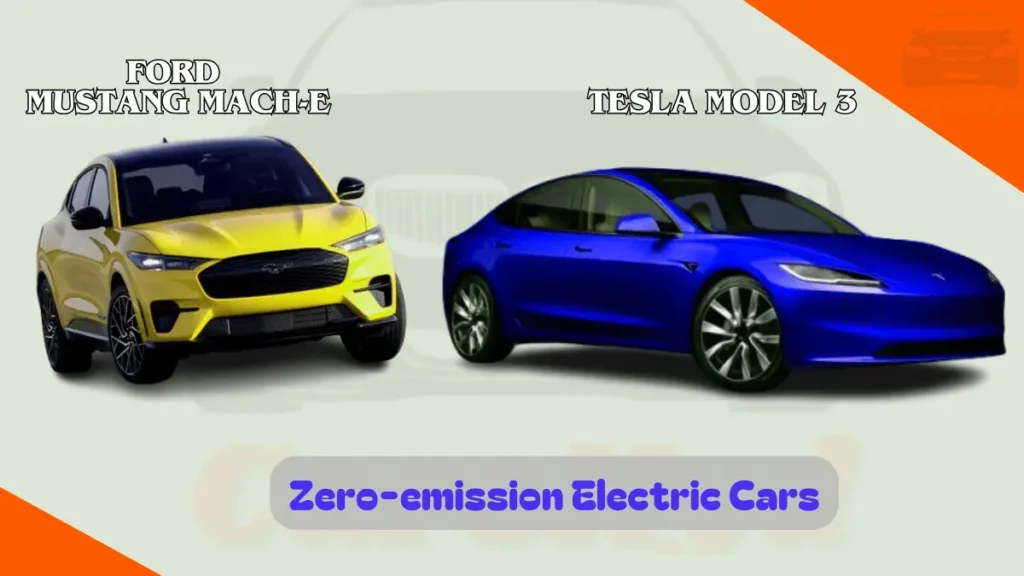
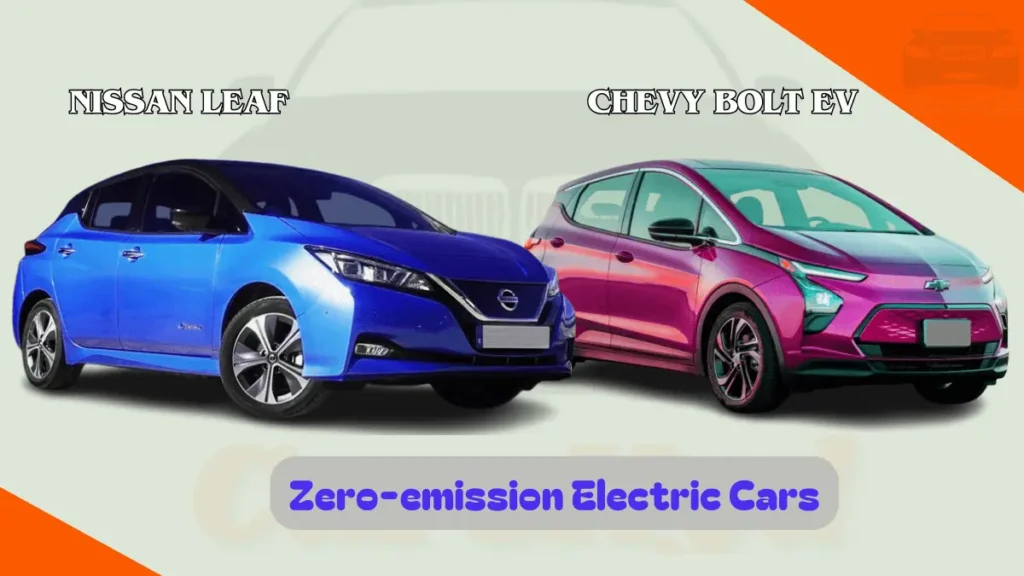
There are now numerous zero-emission electric cars on the market, each offering different features, range, and price points. Here are some of the top models to consider for 2024:
- Tesla Model 3: Known for its long range, fast acceleration, and cutting-edge technology, the Tesla Model 3 is a top choice for many electric car buyers.
- Nissan Leaf: A more affordable option, the Nissan Leaf has been one of the most popular EVs for years. It offers great value for those looking for a practical and cost-effective electric car.
- Chevy Bolt EV: The Chevy Bolt is a compact EV that provides a solid range, ample interior space, and great value for money.
- Ford Mustang Mach-E: A stylish SUV that offers impressive performance and a spacious interior, making it an excellent choice for families who want an eco-friendly ride.
| Model | Range (miles) | Price (USD) | Charging Time | Best For |
|---|---|---|---|---|
| Tesla Model 3 | 358 | $39,990 | 6-8 hours | Performance, Commuters |
| Nissan Leaf | 226 | $27,400 | 7-8 hours | Budget-conscious Drivers |
| Chevy Bolt EV | 259 | $31,000 | 6.5 hours | City driving, Compact |
| Ford Mustang Mach-E | 300 | $43,000 | 7 hours | Families, Road Trips |
These cars offer a range of prices and features, making it easier to find the right zero-emission electric car that fits your needs and budget.
How Zero Emission Electric Cars Help the Environment
Reduction in Carbon Emissions
The global switch to electric vehicles plays a key role in reducing greenhouse gas emissions. According to the U.S. Environmental Protection Agency (EPA), the transportation sector accounts for nearly 28% of total U.S. greenhouse gas emissions, with passenger vehicles contributing a large portion. By driving electric, you are directly reducing these emissions and helping to lower the global carbon footprint.
Cleaner, Healthier Cities
Electric cars are especially beneficial for improving air quality in cities, where the majority of pollution comes from traffic. When you choose a zero-emission electric vehicle, you help reduce smog, respiratory issues, and other health problems caused by vehicle emissions. This is a critical issue in urban areas, where air pollution is a major concern.
The Future of Zero Emission Electric Cars
Advancements in Technology
As technology continues to advance, electric vehicles are becoming even more efficient and accessible. Innovations in battery technology are leading to longer ranges and shorter charging times, while improvements in charging infrastructure make it easier than ever to power up your car.
- Battery Innovation: The development of solid-state batteries could increase the range and safety of electric vehicles, while also reducing costs.
- Fast Charging: Fast-charging networks are expanding, and new technologies could allow you to charge your car up to 80% in just 30 minutes.
- Self-Driving Electric Cars: The integration of autonomous driving technology in electric vehicles could make the driving experience even more efficient and safe.
Global Adoption of Electric Vehicles
The future is electric. Countries around the world are pushing for the mass adoption of electric vehicles, with some even setting dates for the ban of new internal combustion engine (ICE) vehicles in the coming decades. For instance, Norway has already set a target to sell only electric cars by 2025, and many other nations are working towards similar goals.
Overcoming the Challenges of Zero Emission Electric Cars
While the benefits are clear, there are still some challenges to adopting zero-emission electric cars:
Common Concerns
- Range Anxiety: Many potential buyers worry about running out of charge on long trips. However, as battery technology improves and the charging infrastructure expands, this issue is becoming less of a concern.
- Charging Stations: Although public charging stations are becoming more common, there are still areas where charging infrastructure is limited. It’s essential to check the availability of charging stations in your area before making the switch.
- Battery Life and Disposal: EV batteries can last for many years, but they eventually need to be replaced. Fortunately, advancements in battery recycling are helping to mitigate the environmental impact of old batteries.
How to Address These Challenges
- Plan for Charging: Use apps and websites to find charging stations along your route.
- Battery Recycling Programs: Participate in battery recycling programs to help reduce waste and reuse valuable materials.
- Range Extender Options: Some new models come with built-in range-extending features, such as additional battery capacity or hybrid technology.
Is It Time to Drive an Electric Car?
By now, it’s clear that zero-emission electric cars are not only an environmentally responsible choice but also a financially smart one. With their environmental benefits, lower operating costs, and exciting technological advancements, electric vehicles are quickly becoming the future of transportation.
If you’re ready to take the leap, now is the perfect time to make the switch. Whether you’re looking to reduce your carbon footprint, save money on fuel and maintenance, or simply enjoy a quieter, smoother driving experience, a zero-emission electric car could be exactly what you need.
Take action today research available models, check out available incentives in your area, and make a sustainable choice for a cleaner future.
FAQs
What are zero-emission electric cars?
Zero-emission electric cars are vehicles that do not emit any pollutants from the tailpipe. They are powered by electricity stored in batteries.
How do electric cars benefit the environment?
Electric cars reduce air pollution and greenhouse gas emissions, making them a key part of the effort to combat climate change and improve air quality.
What is the range of popular electric cars?
The range of popular electric cars can vary. For example, the Tesla Model 3 offers a range of 358 miles, while the Nissan Leaf offers around 226 miles.
Are there incentives for buying electric cars?
Yes, many governments offer tax credits, rebates, and other incentives to encourage the adoption of electric vehicles.
How long does it take to charge an electric car?
Charging times vary depending on the battery size and charger used. On average, it takes 6-8 hours to fully charge an EV using a home charging station, but fast chargers can charge up to 80% in around 30 minutes.






